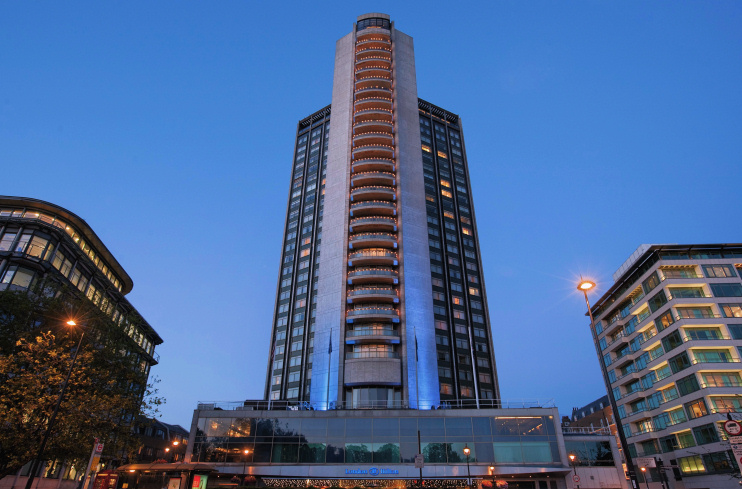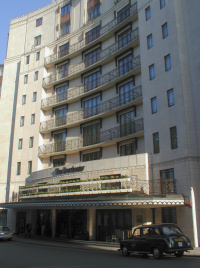Park Lane
Park Lane, Westminster
This prestigious thoroughfare came into existence on the eastern edge of Hyde Park after Henry VIII enclosed the park in the early 16th century

What is now Park Lane was a rough track called Tyburn Lane until the 18th century. As Mayfair grew, titled gentlemen erected mansions on the east side of the new road. Dorchester House was built in 1751 but did not gain that name until after its acquisition by Joseph Damer, who was made first Earl of Dorchester in 1792.
The Grosvenor family, later the dukes of Westminster, lived on Park Lane from 1806. From the 1820s the road was intensively built up with very fine houses. In 1869 Dorchester House was rebuilt for Robert Stayner Holford in the style of a Renaissance palace. The German financier Alfred Beit commissioned Aldford House in 1897.
With such fine views across the park, even the high values of its 18th- and 19th-century mansions did not deter property speculators from redeveloping the road between the wars, mostly with luxury hotels. When the art deco Park Lane Hotel (now the Sheraton Park Lane) opened in 1927 it was the first British hotel with a bathroom for every bedroom.

The Grosvenor House hotel opened in 1929 and in the same year Dorchester House was demolished. The floors and ceilings of the highly specified hotel that replaced Dorchester House were lined with compressed seaweed for improved soundproofing.
In 1962 part of Hyde Park was taken to allow Park Lane to be made into a dual carriageway and the road was diverted at the south end to enter Hyde Park Corner by the side of Apsley House. A cavernous underground car park was built beneath Hyde Park, with single-storey space for 1,100 cars and innovative automatic entry barriers.
Shown in the photo at the top of this article, the 28-storey Hilton became a new London landmark on its completion in 1963. The Inn on the Park (now the Four Seasons) followed in 1970.
In addition to its hotels, Park Lane also has prestige offices and showrooms for exclusive car marques. Only near its northern end is there any semblance of conventional retailing at street level.
Park Lane residences signify high social status for Frederick Augustus Bullock in Thackeray’s Vanity Fair and for the Honourable Ronald Adair in Conan Doyle’s Adventure of the Empty House.
The National Trust was founded at a meeting in Grosvenor House in 1895.
Herbert Wilcox directed the romantic comedy film Spring in Park Lane (1948), which starred Michael Wilding and Anna Neagle, who had lived at Aldford House.
Postal district: W1
Further reading: Frances Osborne, Park Lane, Virago, 2012 (a novel set in 1914)
